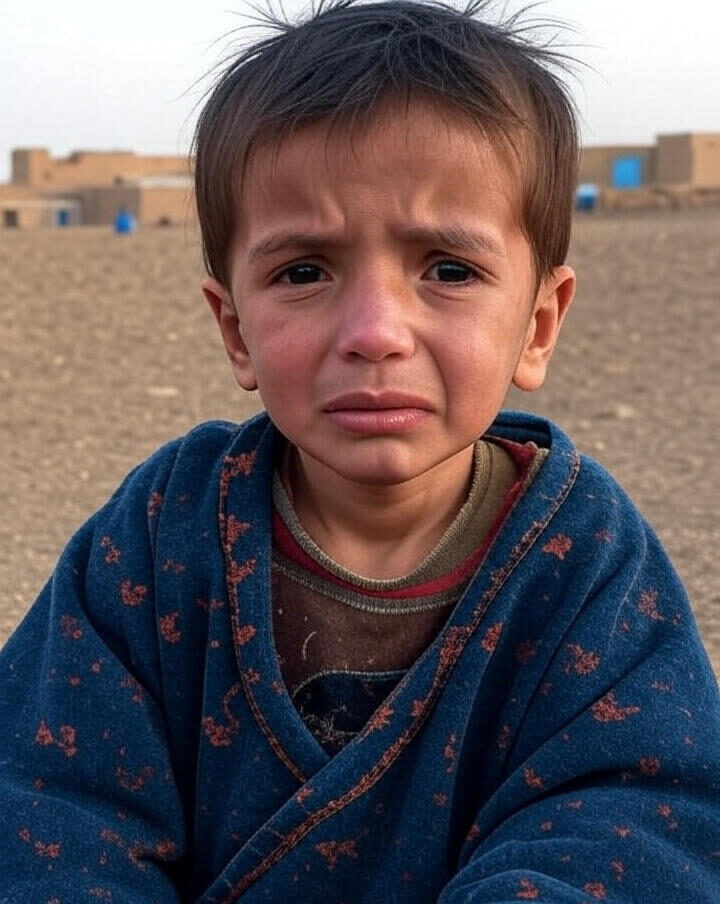Overview
Afghanistan is experiencing its sharpest-ever surge in child malnutrition, according to the UN’s World Food Programme (WFP). Nearly 10 million people about 25% of the population face acute food insecurity, while one in three children is stunted. The WFP urgently needs $539 million in funding to assist vulnerable families across the country.(AP News)
What’s Driving the Crisis?
Aid Cuts & Reduced Donor Support
Large scale reductions in food aid most notably the cessation of U.S. funding in April 2025, when the U.S. had been WFP’s largest donor have crippled relief efforts. The U.S. had contributed $4.5 billion of WFP’s $9.8 billion total funding in the previous year.(AP News)
Mass Returns & Overburdened Communities
Deportations from neighboring countries, especially Iran, have increased food insecurity. The WFP has helped 60,000 returnees recently, but lacks sufficient funding to assist all eligible families.(AP News)
Climate & Environmental Stressors
Afghan communities face severe droughts, flash floods, and diminished arable land, undermining local food systems and livelihoods.(AP News)
Health Service Collapse
The dramatic loss of funding has forced closure of over 420 health facilities, cutting off primary care for more than 3 million people. Worsening disease outbreaks and malnutrition cases strain remaining services.(washingtonpost.com)
Scale & Severity
- According to the Integrated Food Security Phase Classification (IPC), roughly 3.5 million children aged 6 to 59 months were projected to suffer acute malnutrition between June 2024 and May 2025 including nearly 870,000 severe cases and 2.6 million moderate cases. About 1.2 million pregnant and breastfeeding women were also affected.(reddit.com)
- UNICEF estimates that 22.9 million people including 12 million children will require humanitarian aid in 2025 due to compounding conflict, economic decline, and climate shocks.(unicef.org)
- A UN joint appeal stated over 3.5 million children under five and 1.1 million women will need nutritional assistance in 2025.(Globedge).
Human Impact & Warning Signs
- Anecdotes from affected families like children going to bed hungry and mothers lacking access to clinics underscore the human toll. Families in Badghis Province report contaminated water and illness due to malnutrition and lack of care.(amu.tv)
- Aid organizations, including Action Against Hunger, warn that thousands of children face life threatening malnutrition, particularly in the absence of therapeutic feeding units in regions like Kabul and Badakhshan. Many may die without treatment.(AP News)
- UN agencies called malnutrition “a generational crisis,” stressing that it stems from the breakdown of domestic food systems, clinic closures, and chronic poverty.(KabulNow)
Response & Recommendations
UNICEF & UK Initiative: First Foods Afghanistan
This new program targets 1.7 million children across 34 provinces, particularly under two years old. It emphasizes affordable, nutrient rich alternatives and local production of fortified foods anchored within integrated systems covering health, water, sanitation, education, and community engagement.(daryo.uz)
Funding Needs
- WFP requires $539 million through January for food relief and an additional $15 million specifically for returnee assistance.(AP News)
- Global funding shortages also jeopardize nutrition programs in other crisis affected countries like Yemen and Syria.(reuters.com)
NGO Responses
Save the Children continues to operate essential clinics even where funding has been withdrawn ensuring thousands still receive screenings and treatment for acute malnutrition. But these efforts are not scalable without renewed international support.(savethechildren.net)

Summary Table
| Factor | Impact |
|---|---|
| Aid withdrawal (especially US) | Reduced emergency rations, clinic closures, fewer screenings |
| Environmental & economic shocks | Food scarcity, disrupted agriculture, drought & floods reduce food access |
| Mass returnees from Iran | Increased burden on limited resources and aid systems |
| Child & maternal malnutrition | Millions suffering wasting, stunting, with long-term developmental effects |
| Institutional response | Appeals for funding, scaling prevention programs, integrated community plans |
Conclusion
Afghanistan is enduring a catastrophic surge in child malnutrition driven by sharp aid cuts, a faltering healthcare infrastructure, climate shocks, and mass displacement. With one in three children stunted, and over 3.5 million acutely malnourished, the crisis requires urgent global intervention. Holistic, locally led initiatives like First Foods Afghanistan offer hope but only if backed by sustained international commitment and funding.

